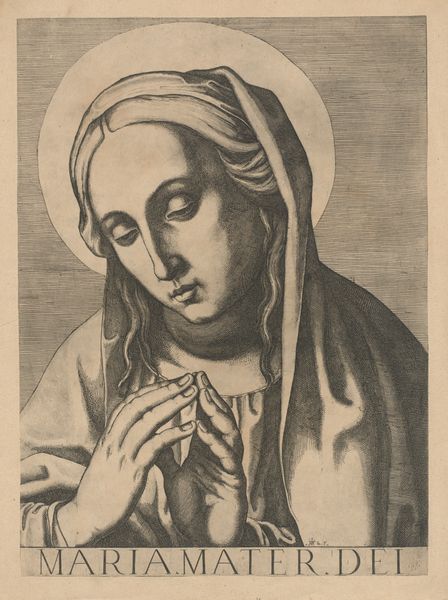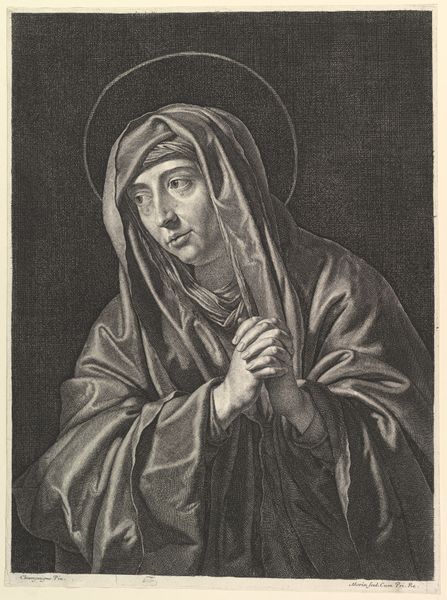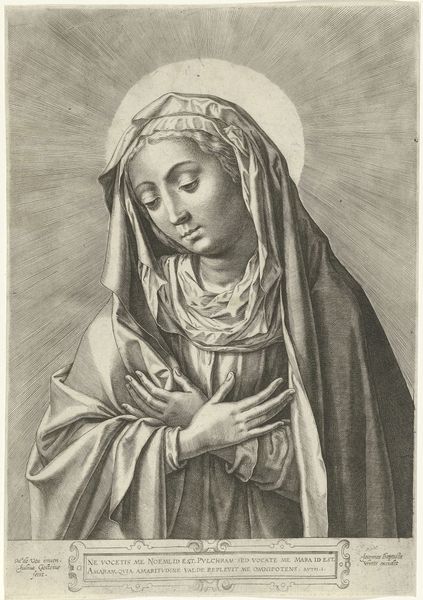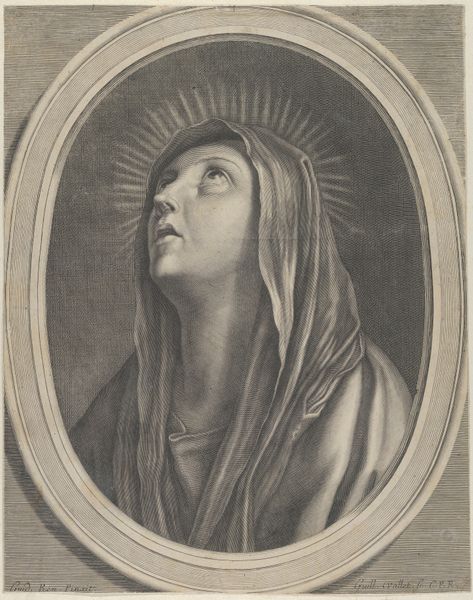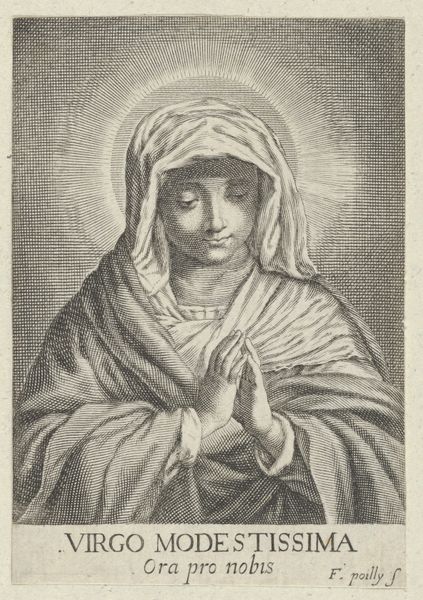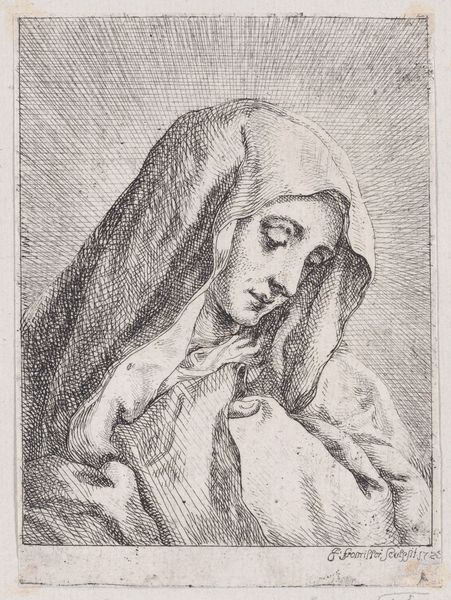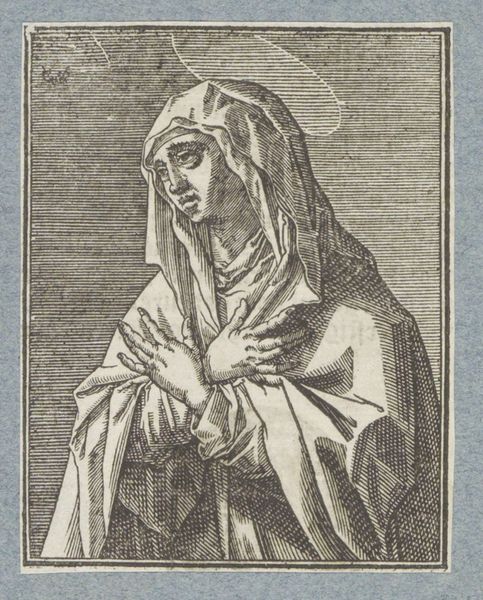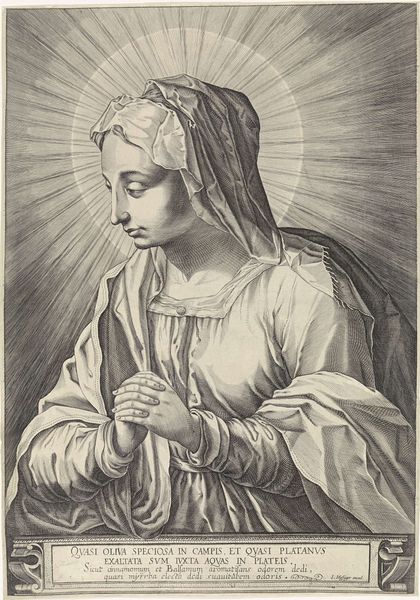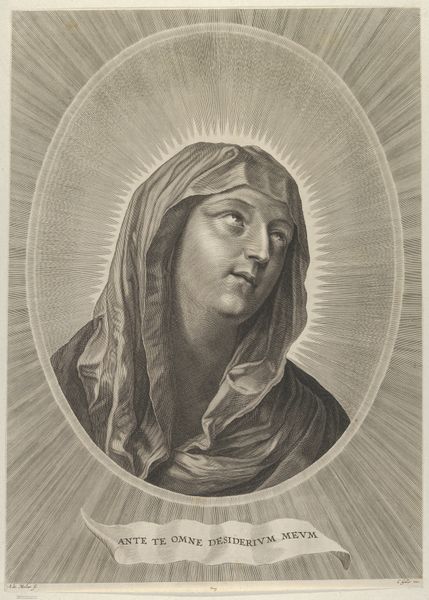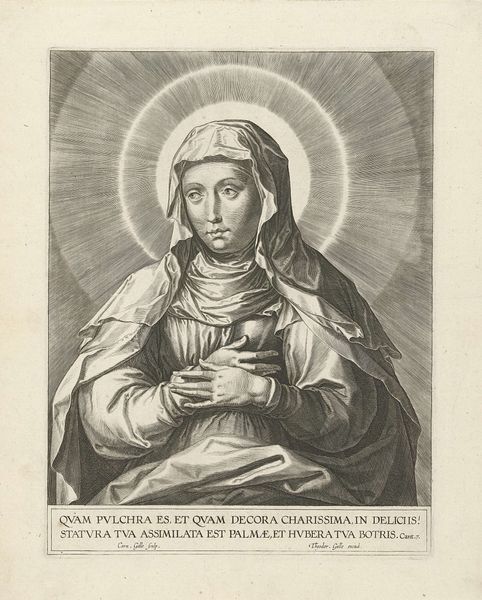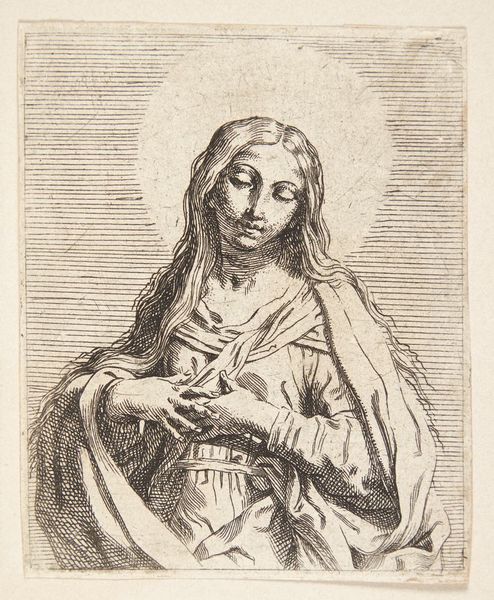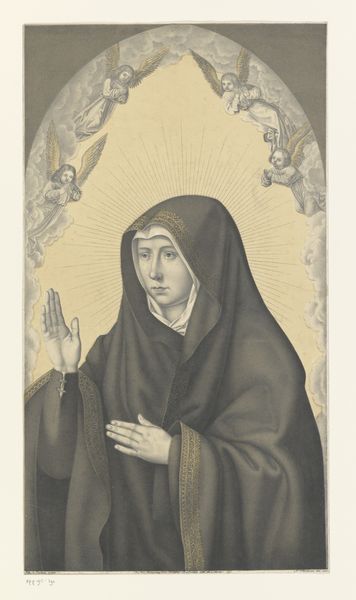
engraving
#
portrait
#
baroque
#
history-painting
#
engraving
Dimensions: height 246 mm, width 182 mm
Copyright: Rijks Museum: Open Domain
Curator: There's such an undeniable emotional intensity radiating from this engraving. The subject's palpable sorrow immediately pulls you in, doesn’t it? Editor: Indeed. This engraving, "Maria als Mater Dolorosa," which translates to Mary as the Sorrowful Mother, by Pieter Schenk, dating between 1670 and 1713, presents a potent image deeply rooted in religious iconography. It's housed right here at the Rijksmuseum, representing a significant example of baroque portraiture engaging with themes of suffering and devotion. Curator: Baroque, definitely, the drama’s just simmering! I mean, the delicate lines conveying Mary's upward gaze, those tightly clasped hands…it's all communicating profound grief without a single tear explicitly shown. There’s such restraint. It's like she's looking beyond earthly pain, hoping for solace. Editor: That restraint is key. The print circulated within a context of religious devotion where images acted as tools for contemplation and emotional engagement. Consider the politics of imagery; while the Reformation impacted visual culture, images of Mary remained significant, albeit carefully presented, for various groups. Schenk, as a publisher and engraver, would have been acutely aware of his audience and the socio-political nuances of portraying such a revered figure. Curator: Absolutely, you see the tension in the image – between portraying the raw human emotion, and needing to be careful, respectful, perhaps even controlled. The use of engraving adds this sharp precision and somberness which fits perfectly. Tell me, is it me, or is there some gentleness hinted with the use of the halo? Editor: The halo is significant. It firmly situates Mary within the divine realm, reinforcing her status, but, perhaps controversially, without diminishing the very human grief that’s so carefully etched on her face. Curator: Exactly. It creates that vital connection. Making the divine accessible, tangible, deeply, heart-wrenchingly *human*. Editor: Schenk was really adept at tapping into complex emotions using accessible visual language. Curator: The piece encourages empathy, then – not just reverence but genuine connection with the human condition of sadness and loss. Well, looking at it now, it brings that empathy in full force.
Comments
No comments
Be the first to comment and join the conversation on the ultimate creative platform.
